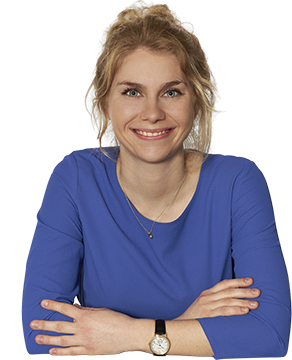New rules on earmarked maternity and paternity leave on the way
Recently, the social partners in Denmark entered into an agreement on a model for earmarked leave in connection with childbirth for both parents. The proposed model reflects the implementation of the EU work-life balance directive, which attempts to decrease inequality on the labour market. In this newsletter, we are taking a closer look at the proposed model, and what the coming rules will entail for companies.
Pursuant to the new agreement, 2 weeks of maternity and paternity leave as well as 9 weeks of parental leave will be earmarked for each parent when the new rules enter into force. That means that there will be 11 weeks of leave that are non-transferable between the parents. The leave must be taken, otherwise, the entitlement to it will be forfeited. At the same time, the agreement will also implement the EU work-life balance directive, which is a minimum directive.
Under the existing rules, maternity and paternity leave as well as parental leave is allocated as follows:
- 4 weeks of pregnancy leave for the mother before the birth of the child
- 14 weeks maternity leave for the mother, of which 2 weeks are statutory
- 2 weeks of earmarked paternity leave
- 32 weeks of parental leave for each parent
According to the proposed model, the maternity and paternity leave as well as the parental leave will be allocated as follows under the coming rules:
- 4 weeks of pregnancy leave for the mother before the birth of the child
- 2 weeks of earmarked maternity and paternity leave for each parent
- 8 weeks of transferable maternity and paternity leave for each parent. However, the father or co-mother must take the parental leave before the child turns 1
- 9 weeks of earmarked parental leave for each parent
- 5 weeks of transferable parental leave to be taken before the child turns 9
What do the new rules mean?
The model will mean that a mother and father or co-mother will have 24 weeks of leave in total after birth, where they are eligible for benefits. However, the new model also means that both the mother and father or co-mother must take 2 weeks of earmarked maternity or paternity leave and 9 weeks of parental leave. That means that a total of 11 weeks of leave after childbirth are non-transferable between the parents.
With the new model, a father or co-mother and the mother can choose to transfer 13 weeks between each other. If the mother chooses to transfer all 13 weeks to the father or co-mother, that parent will be able to take 37 weeks of leave in total after childbirth. Does the father or co-mother choose to transfer all of their leave to the mother, she can take 41 weeks of leave in total, including the 4 weeks of pregnancy leave.
IUNO’s opinion
The purpose of the coming rules is to decrease inequality and increase flexibility on the labour market. If male employees begin taking the same leave as female employees, female employees will obtain a better position on the labour market. The reason is that there will be a more equal distribution of how much time female and male employees will take away from the labour market.
Should the model be passed in its current form, companies must change their leave policies to ensure compliance with the new rules. At the same time, that will raise questions as to how the coming rules should be implemented in the company policies. Companies should already now start preparing for the coming changes. IUNO recommends that companies have their leave policies reviewed together with the requirements to implementation.
The agreement in question has been made between FH and DA, and it has been sent to the government and parliament, which then will have to make a final decision about the proposed model.
[Agreement between FH and DA of 13 September 2021]
Pursuant to the new agreement, 2 weeks of maternity and paternity leave as well as 9 weeks of parental leave will be earmarked for each parent when the new rules enter into force. That means that there will be 11 weeks of leave that are non-transferable between the parents. The leave must be taken, otherwise, the entitlement to it will be forfeited. At the same time, the agreement will also implement the EU work-life balance directive, which is a minimum directive.
Under the existing rules, maternity and paternity leave as well as parental leave is allocated as follows:
- 4 weeks of pregnancy leave for the mother before the birth of the child
- 14 weeks maternity leave for the mother, of which 2 weeks are statutory
- 2 weeks of earmarked paternity leave
- 32 weeks of parental leave for each parent
According to the proposed model, the maternity and paternity leave as well as the parental leave will be allocated as follows under the coming rules:
- 4 weeks of pregnancy leave for the mother before the birth of the child
- 2 weeks of earmarked maternity and paternity leave for each parent
- 8 weeks of transferable maternity and paternity leave for each parent. However, the father or co-mother must take the parental leave before the child turns 1
- 9 weeks of earmarked parental leave for each parent
- 5 weeks of transferable parental leave to be taken before the child turns 9
What do the new rules mean?
The model will mean that a mother and father or co-mother will have 24 weeks of leave in total after birth, where they are eligible for benefits. However, the new model also means that both the mother and father or co-mother must take 2 weeks of earmarked maternity or paternity leave and 9 weeks of parental leave. That means that a total of 11 weeks of leave after childbirth are non-transferable between the parents.
With the new model, a father or co-mother and the mother can choose to transfer 13 weeks between each other. If the mother chooses to transfer all 13 weeks to the father or co-mother, that parent will be able to take 37 weeks of leave in total after childbirth. Does the father or co-mother choose to transfer all of their leave to the mother, she can take 41 weeks of leave in total, including the 4 weeks of pregnancy leave.
IUNO’s opinion
The purpose of the coming rules is to decrease inequality and increase flexibility on the labour market. If male employees begin taking the same leave as female employees, female employees will obtain a better position on the labour market. The reason is that there will be a more equal distribution of how much time female and male employees will take away from the labour market.
Should the model be passed in its current form, companies must change their leave policies to ensure compliance with the new rules. At the same time, that will raise questions as to how the coming rules should be implemented in the company policies. Companies should already now start preparing for the coming changes. IUNO recommends that companies have their leave policies reviewed together with the requirements to implementation.
The agreement in question has been made between FH and DA, and it has been sent to the government and parliament, which then will have to make a final decision about the proposed model.
[Agreement between FH and DA of 13 September 2021]
Similar
The team

Alexandra
Jensen
Associate
Alma
Winsløw-Lydeking
Senior legal assistant
Anders
Etgen Reitz
Partner
Cecillie
Groth Henriksen
Senior associate
Elias
Lederhaas
Legal assistant
Emilie
Louise Børsch
Associate
Johan
Gustav Dein
Associate
Kirsten
Astrup
Managing associate
Laura
Dyvad Ziemer Markill
Legal assistant
Sunniva
Løfsgaard
Legal assistant